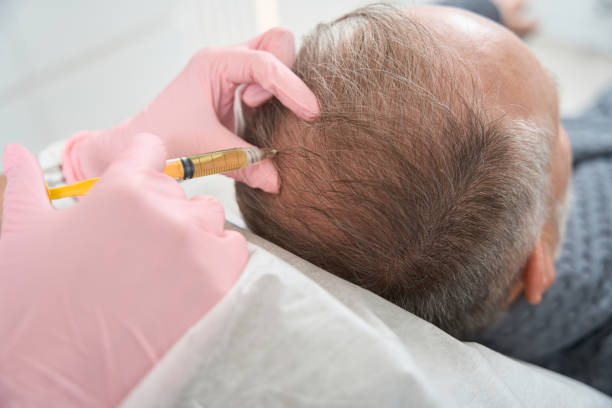Recognizing When COPD is Worsening: Warning Signs You Shouldn't Ignore
Chronic Obstructive Pulmonary Disease (COPD) is a progressive respiratory condition that affects millions of people worldwide. While COPD cannot be cured, proper management can slow its progression and help maintain quality of life. However, the disease may sometimes worsen despite treatment, leading to exacerbations or flare-ups. Recognizing the warning signs that your COPD is deteriorating is crucial for timely intervention. This knowledge can mean the difference between managing symptoms at home and requiring emergency care or hospitalization.

What Are the Early Signs of COPD Getting Worse?
The progression of COPD isn’t always obvious, but certain changes should alert you to potential worsening. One of the earliest indicators is increased breathlessness during activities that previously didn’t cause respiratory distress. Perhaps climbing stairs that once caused mild shortness of breath now leaves you gasping for air, or walking short distances requires more frequent rest stops. Another sign is a change in your cough pattern - if your usual cough becomes more frequent, severe, or productive with increased mucus, this may indicate disease progression.
Sleep disturbances can also signal worsening COPD. You might experience more nighttime awakening due to coughing or breathlessness, or find yourself needing more pillows to prop yourself up to breathe comfortably. Additionally, increased fatigue that isn’t relieved by rest, even when performing minimal activities, often indicates declining lung function and reduced oxygen levels in your blood.
How to Tell When COPD Symptoms Are Becoming Dangerous
Certain symptoms represent a significant deterioration in your condition and require immediate attention. A dramatic decrease in exercise tolerance - where even minimal exertion causes severe breathlessness - indicates substantial progression. Changes in the color of your mucus from clear or white to yellow, green, or brown may signal an infection, which can rapidly worsen COPD.
Swelling in your ankles, feet, or legs (peripheral edema) could indicate that COPD is affecting your heart function, leading to right-sided heart failure, a serious complication. Morning headaches and confusion might result from carbon dioxide retention and inadequate oxygen reaching your brain. Perhaps most alarming is the development of cyanosis - a bluish tint to your lips, fingernails, or skin - which signals severely reduced oxygen levels in your blood and constitutes a medical emergency.
Warning Signs That Indicate COPD Progression
COPD progression often follows a pattern that healthcare providers track to determine disease staging. An increased frequency of exacerbations (sudden worsening of symptoms) over time suggests disease progression. If you’re experiencing two or more exacerbations per year requiring antibiotics or steroids, your COPD may be advancing.
Changes in your pulmonary function test results, particularly a declining FEV1 (Forced Expiratory Volume in one second), objectively document disease progression. Weight loss without trying, especially if accompanied by muscle wasting, can indicate advanced COPD where the work of breathing consumes excessive calories. The need for supplemental oxygen, either continuously or during specific activities, is another clear indicator of disease advancement.
Increasing reliance on rescue inhalers (more than usual) or decreasing effectiveness of your maintenance medications suggests that your current treatment regimen is no longer adequately controlling your symptoms - a clear sign of progression requiring medical evaluation.
Key Symptoms to Monitor That May Indicate Worsening COPD
Daily symptom monitoring can help you identify concerning changes early. Tracking your breathing rate at rest is important - an increase in your normal respiratory rate may indicate your lungs are working harder to maintain adequate oxygen levels. Similarly, monitoring your heart rate can be revealing, as persistent tachycardia (rapid heart rate) may develop to compensate for reduced oxygen levels.
Changes in your ability to complete activities of daily living provide practical insights into disease progression. If personal care activities like showering or dressing cause new or increased breathlessness, this suggests declining lung function. Reduced appetite and subsequent nutritional issues often accompany worsening COPD, creating a negative cycle where malnutrition further weakens respiratory muscles.
Speech patterns can also change with advancing disease - if you notice yourself needing to pause mid-sentence to catch your breath when speaking, this indicates significant progression. The development of new or worsening anxiety or depression shouldn’t be overlooked, as these psychological symptoms often accompany and can exacerbate physical COPD symptoms.
When to Seek Immediate Medical Help for COPD Symptoms
Some symptoms represent true emergencies requiring immediate medical attention. Severe, sudden shortness of breath that doesn’t improve with rest or rescue medications constitutes a medical emergency. Chest pain accompanying breathlessness could indicate a heart attack or pulmonary embolism, both of which occur more frequently in people with COPD.
High fever (above 101°F or 38.3°C) accompanying respiratory symptoms suggests a possible infection that could rapidly worsen your condition. Changes in mental status, including confusion, disorientation, excessive sleepiness, or difficulty waking are serious signs of inadequate oxygen reaching the brain. Inability to speak in complete sentences without gasping for air indicates severe respiratory distress requiring emergency care.
If your lips or fingernails develop a bluish tint (cyanosis), this indicates dangerously low blood oxygen levels. Similarly, gray or ashen skin, especially in people with darker skin tones, can signal critical oxygen deprivation. Don’t hesitate to call emergency services if you experience any of these alarming symptoms.
How to Take Action When You Notice COPD Worsening
When you recognize signs of worsening COPD, having an action plan is essential. Many healthcare providers create written COPD action plans that specify when to adjust medications, when to call the doctor, and when to seek emergency care. Familiarize yourself with your action plan and keep it accessible.
Regular communication with your healthcare team is vital. Don’t wait for scheduled appointments if you notice concerning changes - reach out proactively. Consider keeping a symptom diary to track changes objectively and provide your healthcare provider with detailed information. This documentation can help identify patterns and triggers for exacerbations.
Medication adherence becomes even more critical when symptoms worsen. Review your inhaler technique with your provider to ensure you’re receiving the full benefit of your medications. Environmental modifications may help manage symptoms - using air purifiers, avoiding known triggers like smoke or strong scents, and maintaining optimal humidity levels in your home can all support respiratory health during periods of worsening symptoms.
Understanding the signs of worsening COPD empowers you to take appropriate action at the right time, potentially preventing hospitalizations and maintaining your quality of life despite this progressive condition.
This article is for informational purposes only and should not be considered medical advice. Please consult a qualified healthcare professional for personalized guidance and treatment.




